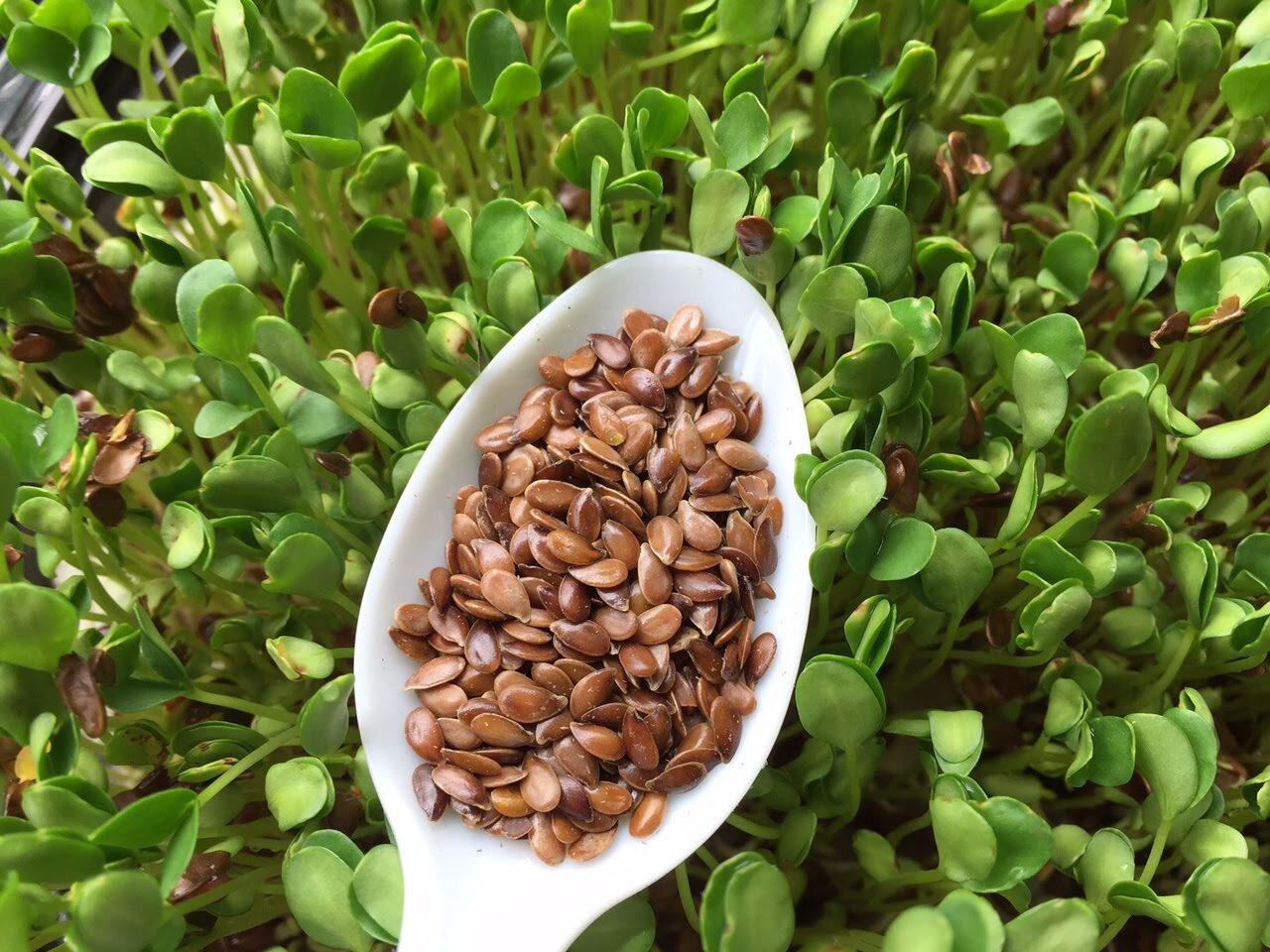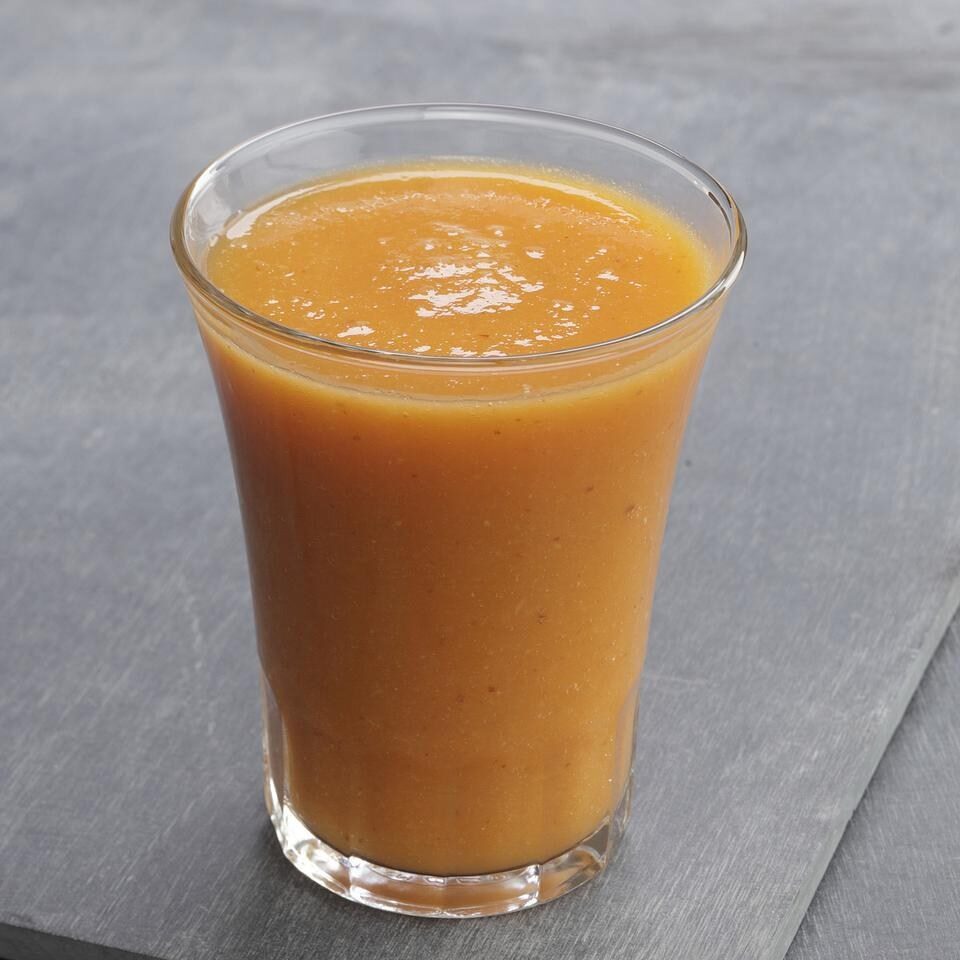
11 Oct Learn About… Flax
“Learn About…” is a recurring post where we’ll look at lesser known herbs, greens, etc., and discuss their origin, health benefits, and everything in between!

Flax, or Linum usitatissimum, is the original health food. Everyone was putting it in their salads, smoothies, and whatever else in between. We all know it aids with digestion, but the mighty flax seed is so much more than that—and its microgreen version is even more impressive.
Not only can you eat flax, but humans have been using flax to create textile as early as 30,000 years ago during the Upper Paleolithic. Use of flax spread to Egypt, the Mediterranean Syria and surrounding regions, then to Eastern Europe and Asia.

Now, we favor more durable fibers, but its nutritional value has not been forgotten. Flax is chock full of vitamins, potassium, iron, essential amino and fatty acids, antioxidants, and perhaps most importantly, lots of dietary fiber and protein.
Flax is also known to reduce cholesterol, in the event that you weren’t already impressed with what flax can do for you!
Its high fibre content—thanks to the gummy material called mucilage—has helped those suffering from digestive issues. When this substance comes into contact with water, it expands to better help stool move through the gastrointestinal tract.
In terms of what people generally use flax for… well, anything, really! Flax has a nutty, slightly spicy flavor, which lends itself very well to such things like smoothies and salads. If you’re looking for a bit of that earthy flavor but have a nut allergy, flax is the perfect addition.
Flaxseed must be stored in the refrigerator and sealed tightly to keep it from becoming rancid. Milled flax can stay stable for a little longer—for as long as nine months at room temperature if it’s packed immediately and not exposed to light or air. Its microgreen version has the same shelf life as any other plant.
So, are you ready to try some new things with flax—and its microgreen version in particular? Take a look at the recipes below!

“Get Your Orange” Flax Smoothie
via Eating Well
Ingredients
2 cups frozen peach slices
1 cup carrot juice
1 cup orange juice
2 tablespoons ground flaxseed or flax microgreens
1 tablespoon chopped fresh ginger
Method
1. Combine peaches, carrot juice, orange juice, flaxseed and ginger in blender; blend until smooth. Serve immediately.

Summer Squash & Microgreen Pesto Galette
via Little Wild Things City Farm
Ingredients
1/2 c fresh whole milk ricotta
3 Tbsp Little Wild Things micro-arugula & lemon pesto
1 sheet puff pastry dough
2-3 small summer squash, cut into thin circles
1 Tbsp pine nuts
olive oil & sea salt
Method
1. Preheat oven to 400 degrees F
2. Roll out one sheet of pastry dough on greased baking sheet, pinch edges up to shape as desired
3. Thinly slice summer squash
4. Spread ricotta evenly onto dough
5. Top ricotta with a thinly spread layer of microgreen pesto
6. Arrange squash slices on top of galette, we used an ombre pattern
7. Sprinkle pine nuts on top of squash and drizzle galette with olive oil. Sprinkle with sea salt to taste.
8. Bake at 400 degrees for 15-20 minutes, until golden brown
Flax is one of our favorite things to grow at Urban Cultivator. It only takes TK weeks to grow before you can harvest it and add it to your favorite salads, smoothies, and more.
See how we grow flax in an Urban Cultivator in the video below!
Do you have any favorite ways to use flax? Let us know in the comments section!

